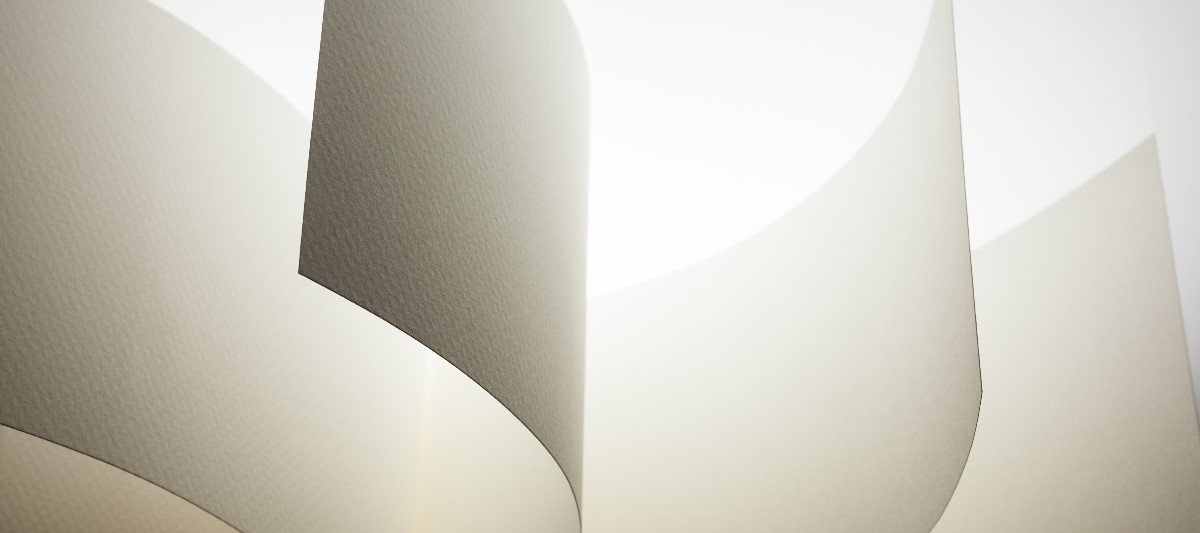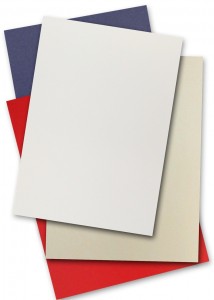If you've ever worked with a commercial printer, chances are you've heard them mention paper weights in relation to your job's cost and quality. You can usually get the basic idea that heavier weights amount to higher quality and costs, but it can get really confusing once you start comparing text weights to cover weights, and so forth.
Also, you might wonder why your printer tells you the paper is 26 lbs, but the finished product is considerably lighter — where does that measurement come from, and how do paper weights work anyway?
The Origin of the Pound
OK so here's the secret: When a commercial printer talks about how many pounds a particular paper weight is, they're referring to the weight of 500 parent sheets. So if you took 500 sheets of bond, and it weighed in at 24 lbs, you would have 24# Bond paper.
Note that I put parent sheets in bold to illustrate a very import fact about paper weights: paper weights are derived from the sheets from which they were cut, not the finish size on which you are printing! In other words, if you have a 500ct ream of letter-sized (8½" x 11") 24# bond, it will not weigh 24 lbs.
Clear as mud? OK, good, because...
It Gets Worse
So now that we understand the origin of the weight measurement, we can assume that 24# Letter Bond, 24# Letter Text/Offset and 24# Letter Cover will all be the same weight and thickness, right?
Wrong!
The standard parent sheets for bond, text and cover are not the same! And yes, this does affect the resulting pound measurement of these stocks. Here's a quick chart to put this in perspective:
| Paper Stock | Standard Parent Sheet |
|---|---|
| Bond | 17 x 22 |
| Text/Offset | 25 x 38 |
| Cover | 20 x 26 |
So as you can see from the chart above, the parent sheet for Cover is slightly larger than the parent sheet for Bond, and the parent sheet for Text/Offset is larger still. What this means is that if you had two stocks of the same weight, and one was Bond while the other was Text, the Text stock would be much lighter and thinner.
Comparative Weights
Since the weight of a particular stock is measured from the parent sheet, and the measurements of the parent sheet for different stocks are not the same, it can make it difficult to understand how they relate to one another — often making choosing a paper stock for your print job something best left to the printing professionals.
However, you can get a rough idea of how they compare once you have worked with your printer for a while, and to help you get started I'll give you this handy reference of comparative weights:
| Bond | Text/Offset | Cover |
|---|---|---|
| 20 | 50 | 28 |
| 24 | 60 | 33 |
| 28 | 70 | 39 |
| 32 | 80 | 44.4 |
| 40 | 100 | 55 |
| 47 | 120 | 65 |
| 58 | 146 | 80 |
| 72 | 183 | 100 |
Typically the heavier the stock, the better the quality, but keep in mind that there are many other factors that affect paper quality, including finish, brightness, color, composition and acidity. The greater your understanding of different paper stocks and how they affect the quality of your print job, the more likely you'll be satisfied with the results.
I hope you all walk away from this post feeling like paper gurus, and if you have any thoughts or questions about Paper Weights, feel free to drop me a message in the comments below. If you need help choosting the right paper for you job, you can have a look at this informational article about the subject, or hit the "Talk to an Expert" button below.



